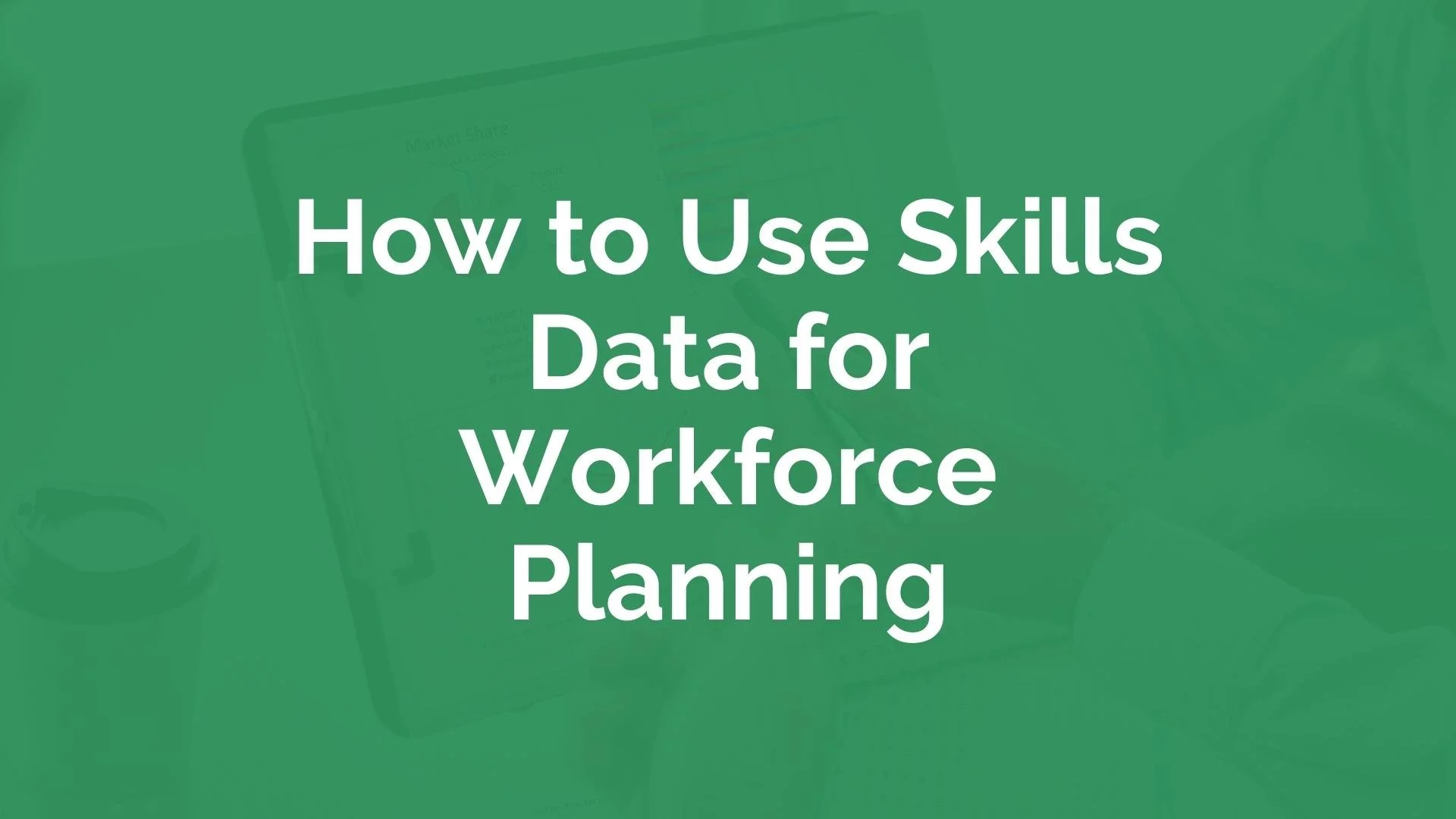How to Use Skills Data for Workforce Planning
“Skills are a key enabler for organisations to achieve their agenda, their purpose. Whether it’s growth, digitisation, transformation or change. Skills are the make or break.”
Alicia Roach, Co-founder and Director at eQ8
In its simplest form, workforce planning is a “framework for analysing both the current and desired future states of the workforce”, which must be scoped in accordance with business context and strategy. Because of the importance of the business context, there can be no “one size fits all” roadmap to successful workforce planning applicable to all organisations.
In research conducted by Insight222 in the second half of 2020 across almost 50 global organisations, including in-depth studies of twelve Fortune 500 companies, we concluded that there are are significant factors that leading companies perform when they “do workforce planning well.” These include:
They link their workforce planning activities directly and completely to the business strategy.
They focus on skills as well as cost and use new sources of external data to explore not just what skills and people they have got, but also what they need to find in the marketplace to succeed.
They measure the value of workforce planning and quantify the results in business terms.
Again, these factors show that workforce planning should be clearly connected to business needs. Unfortunately, our research shows that today, workforce planning is more likely to be focused on HR than the business:
Research from Gartner corroborates this finding, identifying the most important challenge for HR (as a function) with regards to workforce planning, as difficulty getting access to relevant business executives and subsequently struggling to keep up with internally evolving business needs.
Talent Market Analytics: Not so fast!
Connecting workforce planning to the business agenda is one of the key messages in a video posted recently by Alicia Roach, Co-Founder and Director at eQ8 and a recognised thought leader in Strategic Workforce Planning and Analytics.
In a recent post shared by Alicia, she focuses on skills-based workforce planning and the elements organisations need to understand in order to successfully predict the skills that organisations need in the future, in line with business needs.
As Alicia highlights, talent market analytics (both labour market insights and labour market forecasts) are just one piece of the puzzle of strategic workforce planning. Internal skills data on demand and supply is another vital category for SWP (read this blog to learn more about various sources of internal skills data).
Collecting internal skills data for workforce planning
A great case study on understanding internal skills data comes from IBM. Speaking to David Green on the Digital HR Leaders podcast, Diane Gherson, former CHRO at IBM, shared details of their skills inference journey.
As well collecting external skills data through talent market analytics, IBM have collected internal skills data throughout a following rigorous multi-year project. The team used advanced analytics to infer skills across the workforce, and subject matter experts to validate its results in a step-by-step process:
The team selected inferring skills as its method over self-reporting to save time for the project team and employees, and potentially reduce human bias and error. The team also established a principle of ‘skills inference’: what employees share reflects what they know and therefore what their skills are
Employees’ digital footprints were examined through advanced analytics, evaluating materials such as project summaries, pipeline documentation and sales collateral
The result of the initial skills inference was reviewed and validated by experts from the relevant industries and fields across IBM
The validated individual skills profiles were shared with the employee. This transparency was vital due to the use of AI in the skills inference process. 80% of employees reported that their profiles were 100% accurate
The team considered the other 20% of profiles and attempted to refine their work.
You can watch the full conversation between Diane and David here.
Final thoughts
According to our research, nearly all companies surveyed (90%) expressed a desire to build a skills-based workforce planning process. However, only a quarter of companies (26%) are actively doing so.
As you look to build out your skills-based data-driven workforce planning process, bear these two key takeaways in mind:
Link workforce planning activities directly and completely to business strategy.
Incorporate both internal and external sources of skills data, that evaluate both supply and demand of skills, in your workforce planning process.
Are you interested in learning more about skills based workforce planning?
Take a look our course “Building a Skills Based Approach to Workforce Planning” led by Ian Bailie and Alicia Roach. This training course along with many of the resources available in the myHRfuture Academy will help you to understand how to build a skills-based approach to workforce planning across your organisation, by providing an in-depth look at each dimension of the Insight222® Nine Dimensions for Workforce Planning™. Throughout the course we’ll explore which strategic business goals are best suited to a skills-based approach, which data and technology solutions are required, and how to ensure that workforce planning delivers value for the business.
Further reading
We have developed A New Playbook for Workforce Planning, a 150-page guide which covers insights from the research discussed in this article and outlines the Insight222 Nine Dimensions for Workforce Planning™ in detail. The Playbook gives HR practitioners practical guidance on delivering business value with workforce planning. It covers in detail the principles, methodologies and resources needed to sustain effective workforce planning. Click below to download a sample extract of the playbook.
Still want more? Why not check out some of our blog content on Strategic Workforce Planning
· 3 Skills Needed to Deliver Business Value with Workforce Planning
· How to Get Started with Workforce Planning
· How to Build a Workforce Planning Strategy that Delivers Business Value




